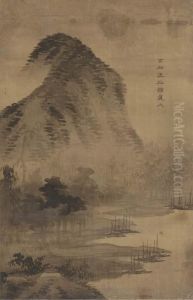Yi Inmun Paintings
Yi Inmun, also known as Lee In-mun, was a prominent Korean painter of the late Joseon Dynasty, known for his exceptional skill in portraying landscapes, flowers, and birds with a delicate and refined touch. Born in 1745, Yi belonged to a period in Korean history that was marked by political stability but also by strict social hierarchies and limited contact with the outside world.
Yi Inmun's artistic talents were recognized early in his life, and he became a court painter, which was a prestigious position that allowed him to work on various royal commissions. As a court painter, Yi had to cater to the tastes of the royalty and the aristocratic class, who favored works that depicted an idealized vision of nature and Confucian values. Yi's paintings often featured serene and harmonious landscapes that were meant to reflect the Confucian ideal of a well-ordered universe.
Despite the constraints of his position, Yi Inmun developed a distinctive style that set his work apart from that of his contemporaries. He is particularly noted for his careful attention to detail and his ability to convey the textures and subtleties of the natural world. Yi's artworks were not just mere representations of nature but were imbued with a sense of poetry and philosophical depth that resonated with the literati class of Korea.
Yi Inmun's influence continued after his death in 1821, as his style became a benchmark for Korean landscape painting. His works were highly valued for their aesthetic qualities and as expressions of the Korean spirit. Yi's legacy is evident in the continued appreciation of his work and in the influence he had on subsequent generations of Korean artists.
